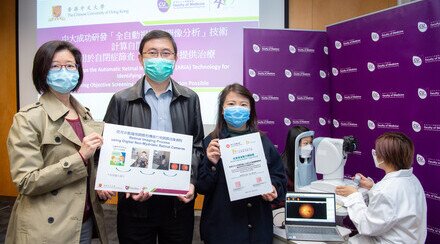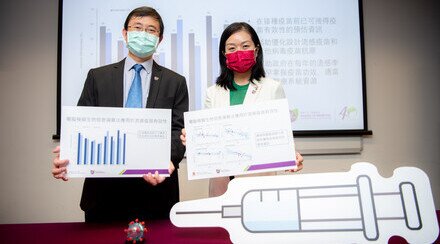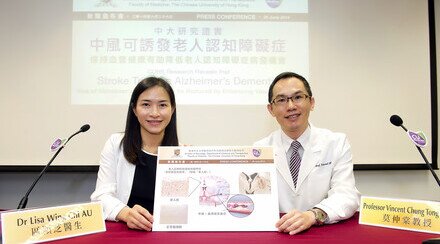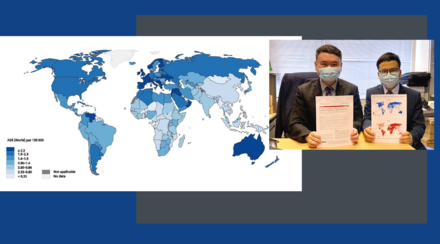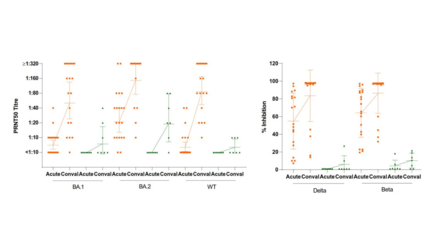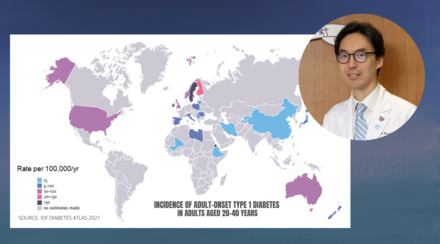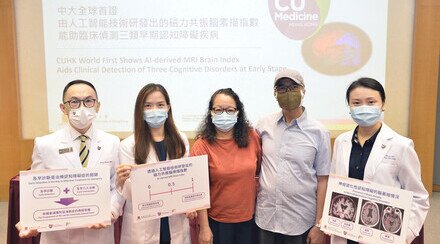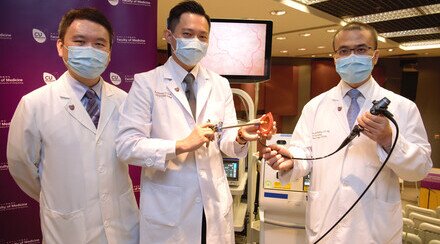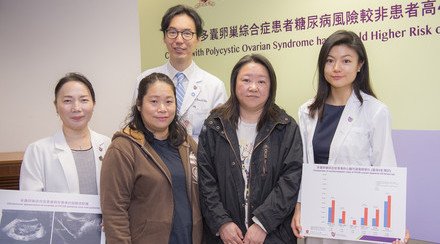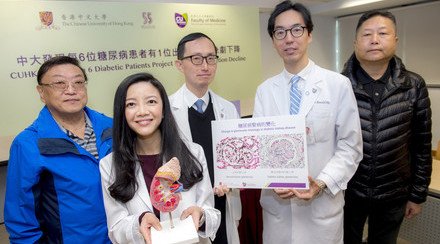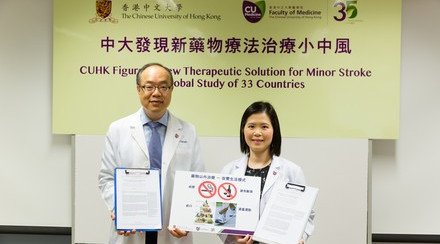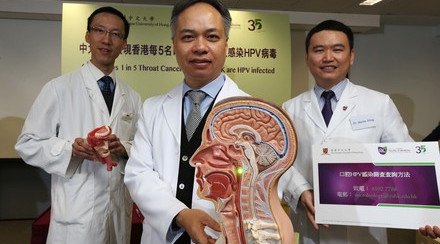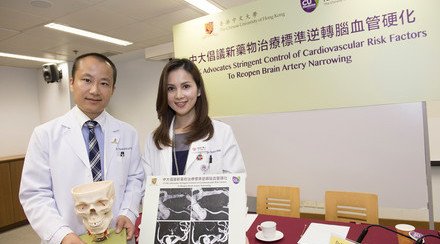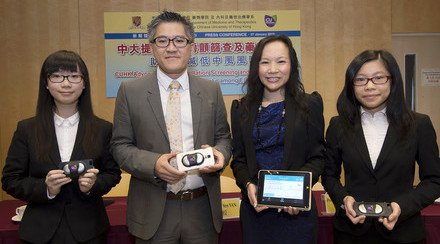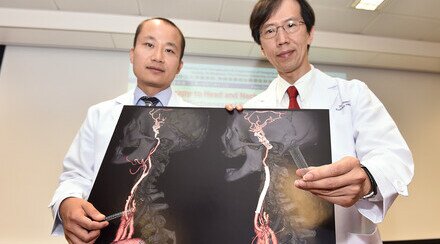CUHK Develops an Automatic Retinal Image Analysis System to Help Diabetes Patients and Elderly Prevent Stroke
Stroke is the fourth leading cause of death in Hong Kong. Diabetic retinopathies (DR) and hypertensive retinopathies are associated with stroke. Retinal vessels are the only visible vessels and accessible by retinal imaging technique. They have the same embryo origin, histological structure and pathological change caused by diabetes and hypertension with cerebral vessels, which provide us a convenient way to assess cerebral vessels condition. Prof. Benny Zee and his research team from the Division of Biostatistics, The Jockey Club School of Public Health and Primary Care at The Chinese University of Hong Kong (CUHK) have developed an automatic retinal image analysis system to assess cerebral vessel condition to evaluate the risk of stroke.

From left: Dr Jack Jock Wai LEE, Biostatistician, Division of Biostatistics, The Jockey Club School of Public Health and Primary Care; Prof. Benny Chung Ying ZEE, Head of Division, Division of Biostatistics, The Jockey Club School of Public Health and Primary Care; and Prof. Vincent Chung Tong MOK, Professor, Division of Neurology, Department of Medicine and Therapeutics at CUHK present their recent research on the use of an automatic retinal image analysis system would help diabetes patients to assess cerebral vessels condition and evaluate the risk of stroke.
In order to study stroke using retinal images, it is logical to study DR first and expand the methodology further to cover new information for stroke. DR is the damage to the retina caused by complications of diabetes mellitus, which can lead to blindness. It is an ocular manifestation of systemic disease which affects up to 80% of all patients who had diabetes for 10 years or more. According to the guideline of American Academy of Ophthalmology, diabetes patients are supposed to be screened for DR at least once a year for mild DR and at least twice for more severe DR for prevention or treatment. However, there are problems with current manual screening process, such as variability between different observers, difficulty in outpatient clinics on image interpretation, etc.
Standard retinal images can be transmitted through internet to server installed with the computer algorithm using advance biostatistics method to read pixel-by-pixel in the retinal images and analyzed these pixels to come up with measurements on exudates, hemorrhages, new vessels and finally the overall rating of retinopathy. The method will decrease bias due to human perceptions, reduce cost and save time. We have tested the automated method by using a sample of 400 diabetes cases, where there were 249 DR patients and 151 were controls. The research team has correctly detected 233 DR cases and 134 cases without DR; the accuracy was 94% and 89% respectively.

From left: Prof. Benny Chung Ying ZEE, Head of Division, Division of Biostatistics, The Jockey Club School of Public Health and Primary Care; Dr Jack Jock Wai LEE, Biostatistician, Division of Biostatistics, The Jockey Club School of Public Health and Primary Care; and Prof. Vincent Chung Tong MOK, Professor, Division of Neurology, Department of Medicine and Therapeutics at CUHK show the fundus camera and a computer with an automatic retinal image analysis system.
With this technology, the CUHK research team has expanded the application for stroke detection and determined important retinal vessels characteristics specifically for stroke. The researchers have completed a case-control study with a sample size of 244 patients, (156 male, 88 female, mean age 65 years old). Among them 122 patients had stroke (81 with diabetes and 41 without diabetes) and 122 were controls (81 with diabetes and 41 without diabetes). In the study, they have correctly identified 110 stroke cases and 104 cases that had no stroke; the accuracy was 90% and 85% respectively.
In conclusion, the automatic retinal image analysis system developed by CUHK has a very high accuracy for DR. The technology is now being expanded to detect stroke for both diabetes patients and non-diabetic individuals.


